Recent studies on yield gap analysis for rice in Southeast Asia revealed different levels of intensification across the main “rice bowls” in the region. Such diversity provides opportunities for identifying the key biophysical and management drivers of rice yield gaps in a comparative way and, hence, to explore opportunities to narrow yield gaps and increase resource-use efficiencies.
Meeting the global rice demand in the future must be achieved through sustainable increases in rice production in the main rice-growing areas of Southeast Asia to avoid further conversion of land to agriculture and to reduce the environmental and health impacts of intensive production. Other grand challenges facing agricultural systems worldwide include the adverse effects of climate change, urban and industrial encroachment, biodiversity loss, and associated loss of ecosystem services and soil degradation.
Against this background, sustainable intensification was proposed as a strategy to increase crop productivity, through yield gap closure on existing agricultural land, while improving resource-use efficiencies and reducing environmental externalities.
Assessing the potential for sustainable intensification is particularly important in many Asian countries where rice is the staple food and irrigated lowland rice occupies a large proportion of the total agricultural land. Indonesia, Vietnam, Thailand, and Myanmar are responsible for nearly 85% of the annual rice production in Southeast Asia.
Indonesia is the third world’s largest rice producer and has been able to achieve near self-sufficiency in recent years. However, some of the country’s most productive agricultural areas, such as Java, are being lost as land is converted for residential, commercial, or other purposes.
Vietnam has become one of the world’s largest rice exporters, and the Mekong Delta produces nearly 60% of Vietnam’s total rice output. However, the rapid intensification of rice production in Southern Vietnam from the late 1990s resulted in an overreliance on agrochemicals that are becoming increasingly expensive, which makes it important to consider improvements in resource-use efficiency and profitability in addition to increases in rice yield.
The same is true in Thailand, one of the world’s largest rice producers and exporters. About half of the total annual rice produced in Thailand comes from the Chao Phraya River Basin, where rising rural wages and input costs have magnified the focus on increasing the profitability of rice production.
Lastly, Myanmar is the fourth largest rice producer in Southeast Asia, with over 55% of the rice area located in the Ayeyarwady Delta. Here, rice productivity is significantly lower than in neighboring countries mostly due to low input use, limited training, and poor infrastructure. However, the government recently set targets to double the agricultural productivity and farmers’ incomes in a little over 10 years.
Strategies to increase food production and meet the future food demand must reconcile environmental and socio-economic factors with narrowing (or maintaining) the existing yield gap between the potential yield (Yp) for irrigated crops and the actual yield (Ya) observed in farmers’ fields.
Yield gap analysis plays a key role in sustainable intensification research as it identifies the contribution of biophysical and management factors, and their interactions, to actual yields. Yet, to increase crop yields sustainably, it is also important to understand the broader socio-economic context in which farmers operate to prioritize the ‘sustainability’ and ‘intensification’ pathways most suitable for a given farming system. Comparative studies, building upon common frameworks and methods, of farming systems in different stages of intensification or affected by different structural transformation of national economies are particularly useful in this regard.
Recent studies on yield gap analysis for rice in Southeast Asia revealed different levels of intensification across the main “rice bowls” in the region. Such diversity provides opportunities for identifying the key biophysical and management drivers of rice yield gaps in a comparative way and, hence, to explore opportunities to narrow yield gaps and increase resource-use efficiencies.
This study revisits the analysis of Stuart et al. (2016) and expands it with a field-specific yield gap decomposition for two growing seasons, representing one annual cropping cycle, across four main irrigated lowland rice areas in Southeast Asia. By doing so, best-bet crop management practices and pathways for sustainable intensification attuned to local conditions can be identified and used to inform policy.
The objective of the present study was two-fold: 1) to decompose rice yield gaps while identifying the key biophysical and management constraints to rice yield, and 2) to explore pathways for sustainable intensification across four irrigated lowland rice areas in Southeast Asia in a comparative way. To do so, crop growth modelling was applied to simulate Yp under different management scenarios and stochastic frontier analysis was used to decompose yield gaps across a sample of rice fields in each of the irrigated lowland sites studied.
Rice yield gaps across four sites in Southeast Asia were decomposed into efficiency, resource, and technology yield gaps using a combination of stochastic frontier analysis and crop growth modelling applied to farm survey data. Yield gaps were greatest in Bago, Myanmar (75% of Yp), and mostly attributed to resource and technology yield gaps.
Yield gaps were intermediate in Yogyakarta, Indonesia (54% of Yp) and in Nakhon Sawan, Thailand (47% of Yp). In Yogyakarta, yield gaps were mostly attributed to efficiency and technology yield gaps whereas in Nakhon Sawan yield gaps were equally attributed to the three intermediate yield gaps.
Yield gaps were smallest in Can Tho, Vietnam (44% of Yp) and mostly attributed to the technology yield gap in both seasons. The efficiency yield gap was also important to explain rice yield gaps in Can Tho during the WS, and the same is likely to be true in the DS as the small sample size might lead to overestimation of the resource yield gap (and hence, underestimation of the efficiency yield gap) estimated here.
The current level of yield gap closure and N application rates indicate there is a large scope to increase rice production in Bago (Myanmar) through increases in fertilizer inputs, whereas in Yogyakarta (Indonesia), Nakhon Sawan (Thailand) and Can Tho (Vietnam) increases in rice production must be accompanied by increases in nutrient-use efficiency.
Increasing nutrient-use efficiency in Nakhon Sawan (Thailand) and Can Tho (Vietnam) requires fine-tuning fertilizer management in relation to the timing, space, and/or form of the inputs applied. Conversely, increasing nutrient-use efficiency in Yogyakarta (Indonesia) requires reductions in the amounts of N applied in addition to fine-tuning fertilizer management practices. Separating efficiency and resource yield gaps helped identifying sites where site-specific nutrient management technologies should be targeted and where fine-tuning fertilizer application rates can contribute to increase nutrient-use efficiency, respectively.
Future studies should investigate the role of yield-reducing factors, particularly pests and diseases, on rice yield gaps and to broaden the assessment presented here to other economic and environmental indicators, including the synergies and tradeoffs between them at crop and at cropping system levels. A better understanding of socio-economic factors affecting sowing dates is also needed, such as timely access to irrigation water, machinery, and labor.
In conclusion, the major rice areas in Southeast Asia exhibit different stages of agricultural intensification that require different approaches to ensure sustainable rice production in the future. By breaking down the yield gap into different components, context-specific opportunities to narrow yield gaps were identified, providing valuable insight to target sustainable intensification of rice production in the region.
Read the study:
João Vasco Silva JV, Pede V, Radanielson A, et al. (2022) Revisiting yield gaps and the scope for sustainable intensification for irrigated lowland rice in Southeast Asia. Agricultural Systems, Volume 198 103383.

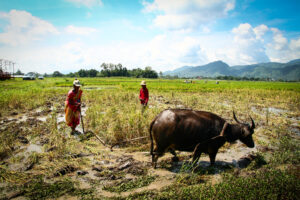
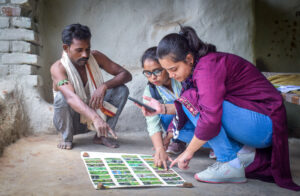
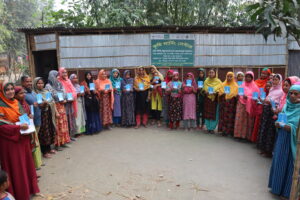
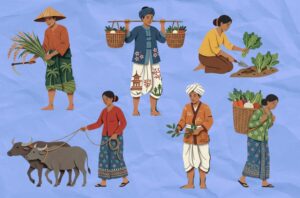
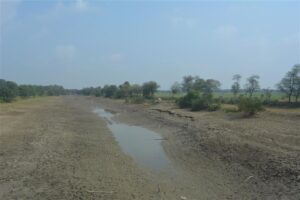
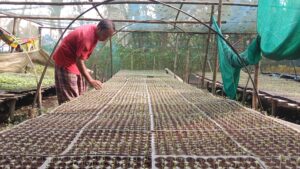
Useful analysis here which cane be replicated in other crops, many thanks